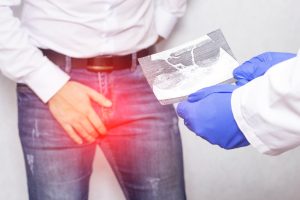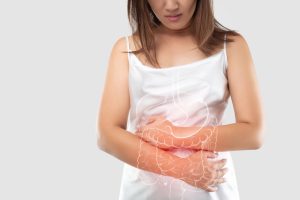What Sparks the Surge in Women’s Sexual Desire? Exploring the Libido Peak
Could the secret to unlocking the peak of women’s sexual libido lie within the rhythmic dance of hormonal cycles? Or does it transcend biological markers to weave into the fabric of psychological well-being and lifestyle choices?
The concept of a “golden era” or peak age for women’s sexual desire is nuanced. It reflects a blend of biological, psychological, and social factors rather than a fixed age range. While it’s commonly believed that women reach their sexual peak in their 30s, this idea is overly simplistic and doesn’t capture the individual variability among women.
Understanding Women’s Libido: Age, Desire, and Beyond
Women’s libido is influenced by a complex interplay of factors, including hormonal changes, mental health, relationship dynamics, and lifestyle habits. For instance, the transition into menopause, which typically occurs around age 50, can lead to changes in sexual desire due to hormonal fluctuations. However, it’s also noted that women’s experiences with libido and sexual activity are highly individual, with some reporting a decline in desire with age, while others notice little to no change or even an increase.
Moreover, it’s important to understand that women’s sexual desire often operates differently than men’s. Many women experience what is known as “responsive desire,” which means their sexual desire often emerges in response to sexual arousal or stimuli, rather than spontaneously. This understanding challenges the notion of a universal sexual peak age and emphasises the importance of context, emotional connection, and intimacy in fostering sexual desire for many women.
Ultimately, the peak of a woman’s sexual desire is deeply personal and can vary widely from one individual to another, influenced by a tapestry of biological, psychological, and social factors. It’s essential to approach this topic with an understanding that there is no one-size-fits-all answer, and sexual well-being is a dynamic aspect of health that can evolve and change throughout a woman’s life.
The Hormonal Highs: Navigating the Libido Landscape
How does the ebb and flow of hormones across the menstrual cycle sculpt the landscape of women’s sexual desire? Scientific investigations reveal a fascinating interplay where hormonal peaks, particularly around ovulation, align with increased libido. This phase is highlighted by a surge in estrogen and testosterone, hormones closely linked with sexual interest and satisfaction. Such biological orchestration suggests an evolutionary predisposition geared towards maximising reproductive success during peak fertility windows. However, this narrative is not universal, as individual experiences of sexual desire can significantly diverge, painting a complex picture of female libido that extends beyond mere hormonal influence.
The Interplay of Hormones and Sexual Desire
A scientific lens reveals the crucial role of hormonal fluctuations within the menstrual cycle. Research elucidates a direct correlation between phases of heightened estrogen and testosterone levels, particularly around ovulation, and an increase in sexual drive.
This hormonal surge is not merely a biological occurrence but is thought to have evolutionary significance, enhancing sexual interest at times of optimal fertility. Yet, the interpretation of these hormonal effects is complex. Individual variations present a broad spectrum of sexual desire, challenging the notion of a uniform libido peak across all women.
Age and Its Influence on Women’s Libido: Beyond the Biological Clock
The relationship between age and women’s sexual libido intertwines with the hormonal and psychological factors previously discussed, yet it introduces a dimension that transcends the physiological changes of the menstrual cycle. Research suggests that while hormonal fluctuations play a pivotal role in libido during the reproductive years, the notion of a peak sexual drive is not confined to a specific age bracket. Instead, factors such as life experience, emotional maturity, and changes in relationship dynamics contribute significantly to the sexual desire experienced by women as they age.
Intriguingly, the period leading up to menopause and the postmenopausal phase mark a transition that, contrary to common perceptions, does not universally lead to a decline in sexual interest.
For many women, this stage of life can bring about a renewed sense of libido, influenced by a complex interplay of reduced fertility concerns, increased sexual confidence, and shifts in personal and partner dynamics. This suggests that the peak of women’s sexual libido cannot be pinpointed to a particular age but may vary greatly among individuals, influenced by both biological changes and the accumulation of life experiences.
Physiological Changes and Sexual Activity
Menopause, a significant milestone in a woman’s life, brings about changes that can affect sexuality and intimacy. These include variations in sexual desire, which may increase or decrease. Other challenges such as vaginal dryness can also make sex uncomfortable. However, treatments such as hormone therapy may considerably boost sexual interest and drive in some women.
Despite common perceptions, ageing doesn’t universally lead to a decline in libido. In fact, some studies have reported little change in sexual activity across the female lifespan. A notable percentage of women aged 65 and over remain sexually active.
Impact of Health Conditions and Medications
Several health conditions and medications can alter sexual desire and function in older adults. Conditions like arthritis, chronic pain, and diseases such as diabetes can interfere with intimacy by causing discomfort. Moreover, medications for various health issues, may have side effects that reduce sexual desire or ability.
Psychological and Social Factors
Beyond physiological changes, psychological and social factors play a crucial role in shaping sexual desire and activity in later life. Emotional closeness and relationship quality remain pivotal for sexual intimacy. Older adults continue to face challenges such as changes in body image, self-esteem, and the dynamics of long-term relationships. Importantly, older women’s experiences of sexuality are not homogenous; they vary widely based on individual health, relationship status, and social context.
Lifestyle, Psychological Well-being, and Communication
Stress management, a healthy lifestyle, and open communication about sexual needs are pivotal in maintaining and enhancing sexual desire. Understanding and addressing the psychological aspects of libido are equally important for sexual well-being at any age.
The exploration of women’s sexual desire peaks reveals a narrative far richer than the search for a definitive age or phase. It highlights the importance of understanding sexual health as an integrated aspect of overall well-being. As we shift our focus from seeking a universal peak to fostering a supportive environment for sexual health, we pave the way for more fulfilling and intimate relationships throughout the journey of life.
References
- Van Anders, S. M. (2012, May 3). Testosterone and Sexual Desire in Healthy Women and Men. Archives of Sexual Behavior. https://doi.org/10.1007/s10508-012-9946-2
- Sexuality and Intimacy in Older Adults. (n.d.). National Institute on Aging. https://www.nia.nih.gov/health/sexuality/sexuality-and-intimacy-older-adults
- Aging and Women’s Sexuality. (n.d.). https://labs.la.utexas.edu/mestonlab/aging-and-womens-sexuality/
- The National Council on Aging. (n.d.). https://www.ncoa.org/article/why-do-older-adults-lose-their-libido













